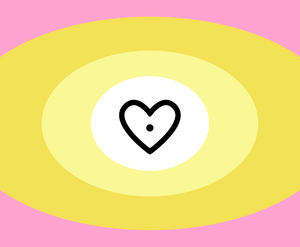Nepiophilia

Nepiophilia is an attraction to children under five years of age. Sometimes it is defined only as an attraction to toddlers (ages 1-4), with infantophilia being a separate term for an attraction towards even younger ages, sometimes it is used as an umbrella term that includes infantophilia as a subcategory. Sometimes these terms are seen as synonymous.
History of the term
The term consists of the Greek "νήπιος" (népios) meaning "infant" or "child," which derives from "ne" and "epos" meaning "not speaking." This is worth clarifying, as there exists another similar Greek root "νέπους" or "νέποδες" meaning "children," or Latin "nepos," "nepotis" meaning "nephew" or "grandson," which does not explain the letter i in "nepio." And φιλία (philía) in turn means "love."
The first mention of the term in a meaning different from contemporary - attraction to "diapered infants" - is credited to John Money in 1990[1].
Symbols
The nepiophile flag (pictured above) was designed by Pappy in March 2022. They also made a nepio caterpillar in 2020, taking inspiration from the childlove butterfly.
-
The nepio caterpillar
Misconceptions
Empirical studies show that in the vast majority of cases nepiophilia does not overlap with pedophilia and that among pedophiles the attraction to children of the nepiophile age group occurs in less than 10% of cases[2], so the identification of nepiophilia and pedophilia or calling the former a sub-type of the latter is fundamentally wrong. In fact, nepiophilia is much less common than hebephilia and ephebophilia, making it the least common of the minor attractions. Due to that non-prevalence, there is much less publicly available information on it than on any other chronophilia. Although according to Howells (1981)[3], Bernard (1982)[4], McConaghy (1993)[5], and Lautmann (1994)[6], male-oriented pedophilia more prevalently blends in with ephebophilia, while female-oriented pedophilia more prevalently blends in with nepiophilia.
References
- ↑ [Goode, S. (2009). Understanding and Addressing Adult Sexual Attraction to Children: A Study of Paedophiles in Contemporary Society (1st ed.). Routledge. https://doi.org/10.4324/9780203873748.
- ↑ Bernard, Frits. (1985). Paedophilia: A factual report. Enclave.
- ↑ Howells, Kevin. (1981). Considerations Relevant to Theories of Etiology. In Mark Cook and Kevin Howells (Eds.), Adult Sexual Interest in Children. London: Academic Press.
- ↑ Bernard, Frits. (1982). Pädophilie und Altersgrenzen ("Paedophilia and Different Ages of Childhood"). In Kinderschänder?—Pädophilie: Von der Liebe mit Kindern (Child Molesters?—Paedophilia: On Childlove), 81-109. Berlin: Foerster Verlag.
- ↑ McConaghy, Nathaniel. (1993). Sexual Behaviour: Problems and Management, 312. New York: Plenum. Retrieved from Library Genesis.
- ↑ Lautmann, Rüdiger. (1994). Unterschiede zwischen Knaben- und Mädchenliebe ("Differences Between Boy- and Girl-Love"). In Die Lust am Kind. Portrait des Pädophilen (Erotic Affection for Minors: Portrait of Paedophilia), 36-40. Hamburg: Ingrid Klein Verlag. Retrieved from the Internet Archive.

